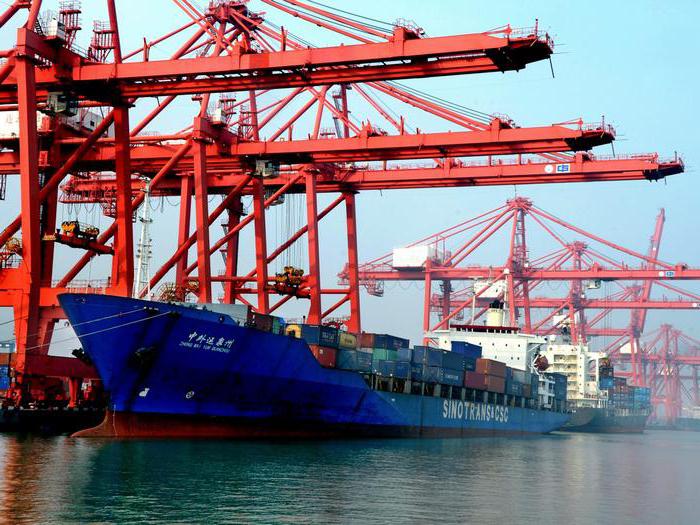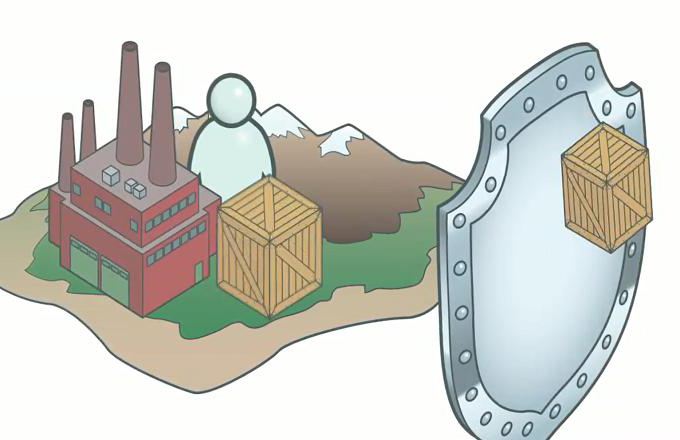After emerging from the prolonged economic depression of the 1860-1870s. in continental Europe, a widespread transition to protectionist politics began. In all countries that implemented this program, significant industrial growth has begun. 
Free trade and protectionism
The evolving business system requires the protection of newly formed and arising under the influence of scientific and technical progress industries from the activities of large foreign companies that have been participating in the turnover of products for a long time. Methods of protectionism have a fairly pronounced social character, especially during structural transformations or the creation of a national industrial sector. During such periods, the state should provide protection to those professional categories that require retraining due to bankruptcy or closure of enterprises.
Free trade and protectionism are two interrelated phenomena. With a sufficiently intensive turnover of products during the period of aggravation of relations between countries or increased tension in the world, protective measures are introduced in order to maintain state security. This is facilitated by the release on its own territory of vital, necessary goods.

Criticism
The policy of protectionism undoubtedly has certain advantages. However, far from all cases, its introduction into the national economic system is advisable. Opponents of this theory give a number of arguments in defense of their position. In particular, they put forward a number of theses.
- Protectionism is a system that is characterized by a certain inconsistency. It manifests itself in the fact that, with the goal of ensuring the achievement of a positive balance in the balance, the program significantly inhibits import operations. The consequence of this is a similar reaction of international partners, which reduce the volume of export supplies. Such actions result in imbalance.
- Protectionism is a program that creates certain barriers in the sectors of the national economy. They undoubtedly provide protection against the activity of foreign firms. But along with this, barriers reduce the incentive to develop industries, as there are failures in the mechanism of competition. At the same time, monopoly privileges and the ability to maintain high profitability destroy the desire for innovation and progress.
- Protectionism is a system that forms a certain multiplying effect. It manifests itself due to interbranch technological communication. If certain protective measures are introduced for some sectors, then other sectors related to them will also require them.
- Economic protectionism causes significant damage to consumer interest. The domestic buyer pays more for imported products, which are subject to import duties, and for products manufactured in the territory of their own state.
- Protectionism is a scheme in which it is impossible to fully exploit the advantages of international specialization due to the fact that more affordable imported products cannot enter the country due to existing restrictions.

Core tools
Protectionism policy implies the formation of non-tariff and tariff restrictions. The latter are customs duties on the import and export of products. This tool is considered the most simple and quite effective.However, today the value of duties is gradually decreasing. State governments increasingly prefer non-tariff protectionist methods. These include, in particular, import (restrictions on the number of imported products) and export quotas (limits of exported products at the request of the importer). Nevertheless, the study of tariff methods does not lose relevance at present, since they continue to be used by various states.
Trade Protectionism: Fees
Tariff barriers have been introduced for a long time. For example, in the early 19th century, Great Britain introduced import duties to protect national agriculture. Towards the end of the century, the United States and Germany began to introduce tariff barriers to preserve new industries. In Russia, duties protect automobile production.
Domestic programs
The government sets high tariffs not only for the import of new, but also used imported vehicles. In this case, the state solves several problems. First of all, the domestic manufacturer is protected from competition. Secondly, obstacles have been formed to fill the domestic market with second-hand imported cars that have already exhausted their resources in their homeland. This, in turn, has a positive effect on the overall level of safety on domestic roads. Thus, the Russian policy of protectionism has both an economic and a social focus.

The result of the introduction of tariffs
The establishment of duties increases the cost of not only imported goods, but also the average price of products in the domestic market. It is beneficial to the national manufacturer. The achievement of such a result, as a rule, acts as the main goal of protectionism. Within the framework of such a program, the state ensures the protection of domestic producers from the low cost of products arising in conditions of competition from foreign enterprises. 
Real and Estimated Level of Protection
It should be noted that the actual result of the introduction of fees may differ significantly from the planned one. The effect of the tariff method may vary at different stages of the production cycle. Consider an example. Suppose, in Russia it is supposed to begin the assembly of certain cars, and in the USA, already established assembly plants are going to develop the production of components. To encourage the domestic auto industry, the Russian Federation introduces a duty on imported finished vehicles in the amount of 20%. Thus, the Russian manufacturer gets the opportunity to raise the price of its products from 10 to 12 thousand dollars. In this case, it is somewhat incorrect to say that domestic enterprises will receive only 20 percent protection. Before the duty was established, Russian manufacturers could work only if the assembly price would be no more than $ 2 thousand (the amount that appears when subtracting the full value from the finished product - 10 thousand - the amount spent on parts - 8 thousand ) After the introduction of the tariff, the existence of enterprises is possible even at 4 thousand (the difference between the new price of 12 000 and the cost of parts). In this case, a 20 percent duty will provide domestic producers with virtually complete protection. 
Another protection option
Suppose that the United States introduces a 10% duty on parts exported to Russia in order to stimulate the domestic production of components. In this case, the cost of components for domestic assemblers will be not 8, but 8.8 thousand dollars. This measure, with stable tariffs on finished vehicles, will make the production of cars at domestic enterprises less profitable. Before the introduction of the duty, the production of cars was considered profitable if the assembly cost was no more than 2 thousand, and after the establishment of the duty, this figure should be no more than 1.2 thousand. Thus, the tariff system will be able to provide protection to the domestic manufacturer, but its quality level will decrease.
